About 20 years ago I´ve harvested a short sapling of juniper at the coast of Southern Toscana near the wonderful Elba Island. I’ ve made my first West Coast style juniper shortie of it.
I love these bows, even it is hard to find a fitting stave of juniper or yew, even they are delicious to tiller. Some of these trials broke, the others turned out to be long lasting and great shooters. Due to the shortness of these bows, they are not that effective in penetration, but shot with matching arrows and a drawlength of about 23″ usually at 40-50lbs they are fast and a highly mobile weapon. Juniper or yew backed with sinew( usually one layer is enough) is a killer- lam.
I prefer to shoot these bows with the traditional fore shaft arrows and bone- tips. The West Coast arrows were made of a main shaft of reed and bone- or stone- tips. The needed thick- walled reed doesn’ t grow in Europe, so I go for small bamboo. Cause of my great experiences with well- grown larch, I use larch as a fore- shaft.
Usually I cut the main- shaft as long as the bow’s drawlength.
The West Coast bow is definitely the bow of Ishi, whom nowadays bowyers are owing a lot. Go here and there for further Information.

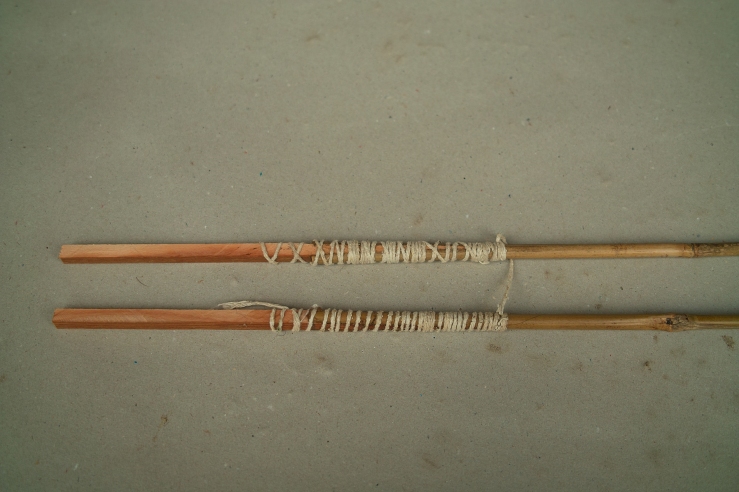
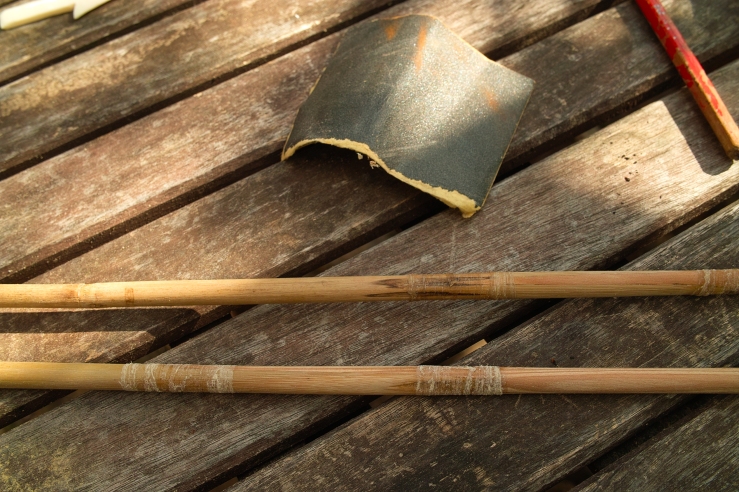
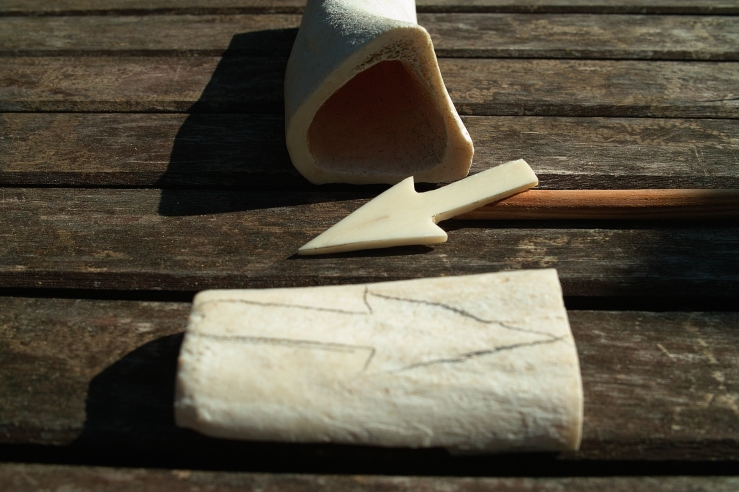
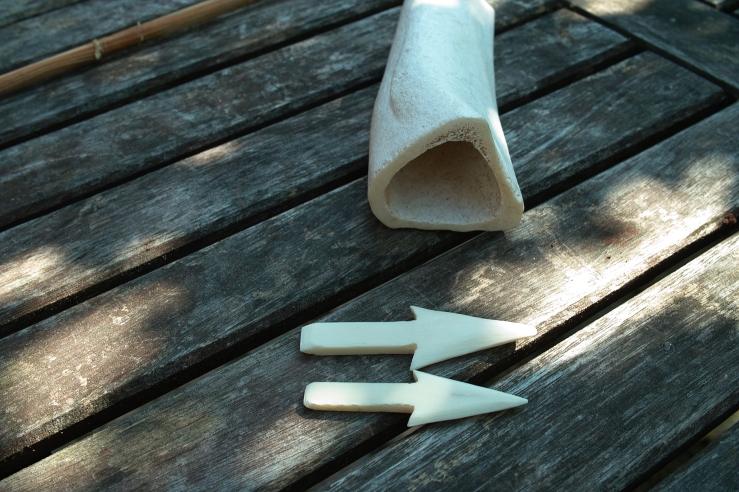
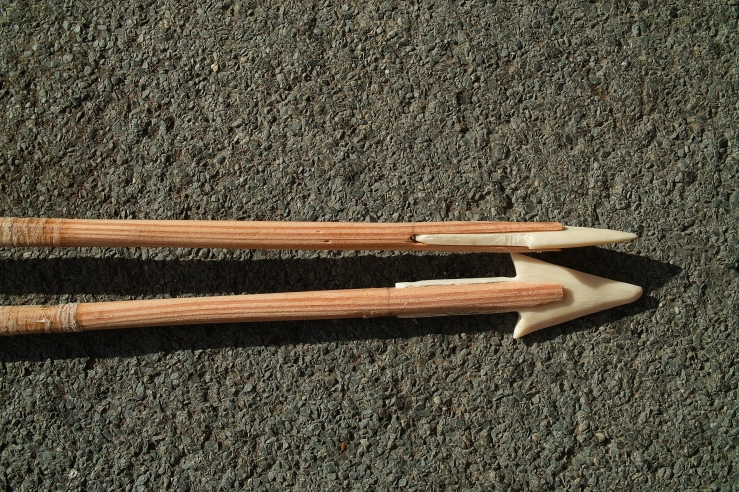

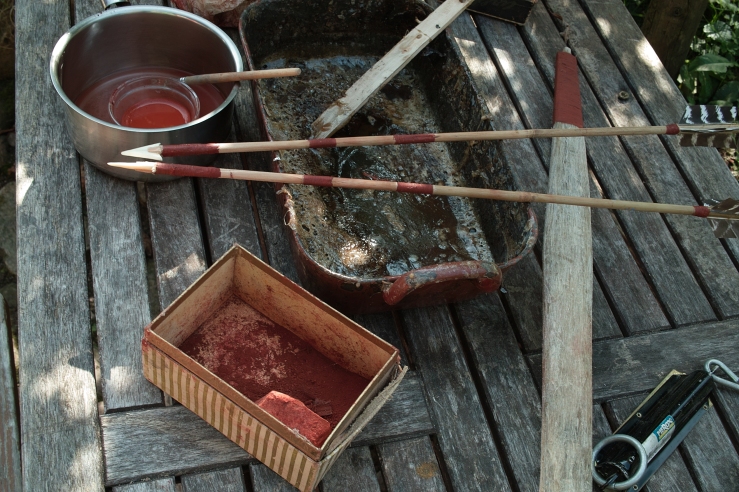
Mix up the pigments with a little water( just brushable), add some drops of hideglue, keep it warm in a waterbath as long as you need it, otherwise it will dry soon.
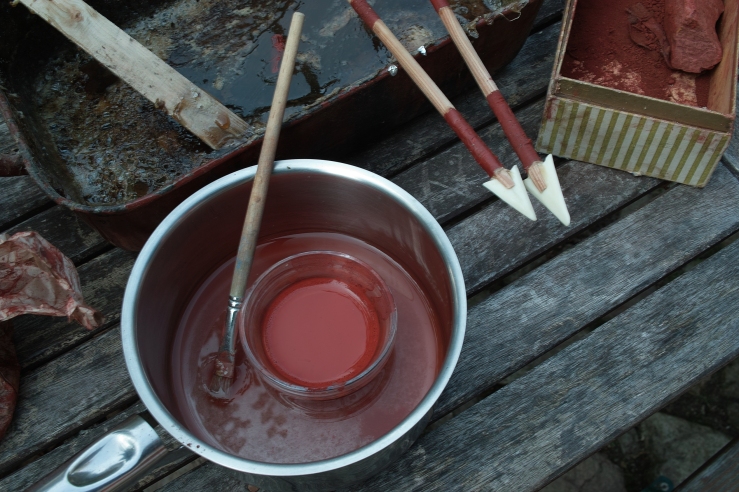
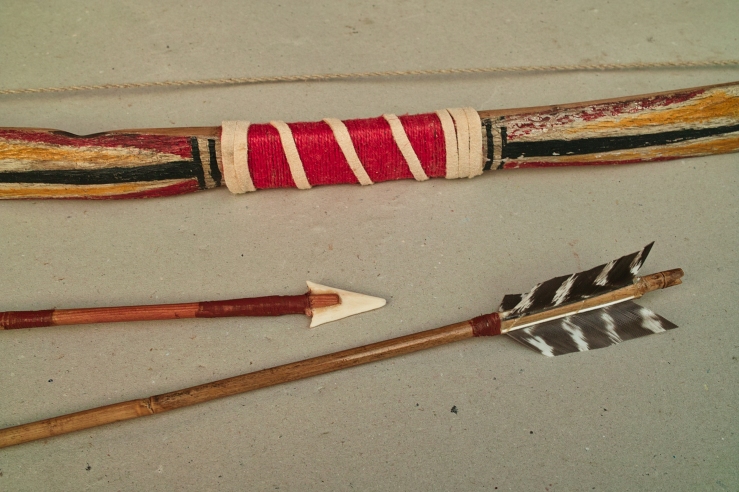
The bow is 37″ in length, it draws 18″ at 40lbs. This set is a quite fast shooter.
The set is for sale, go to my German speaking blog: holzbogenxplosion